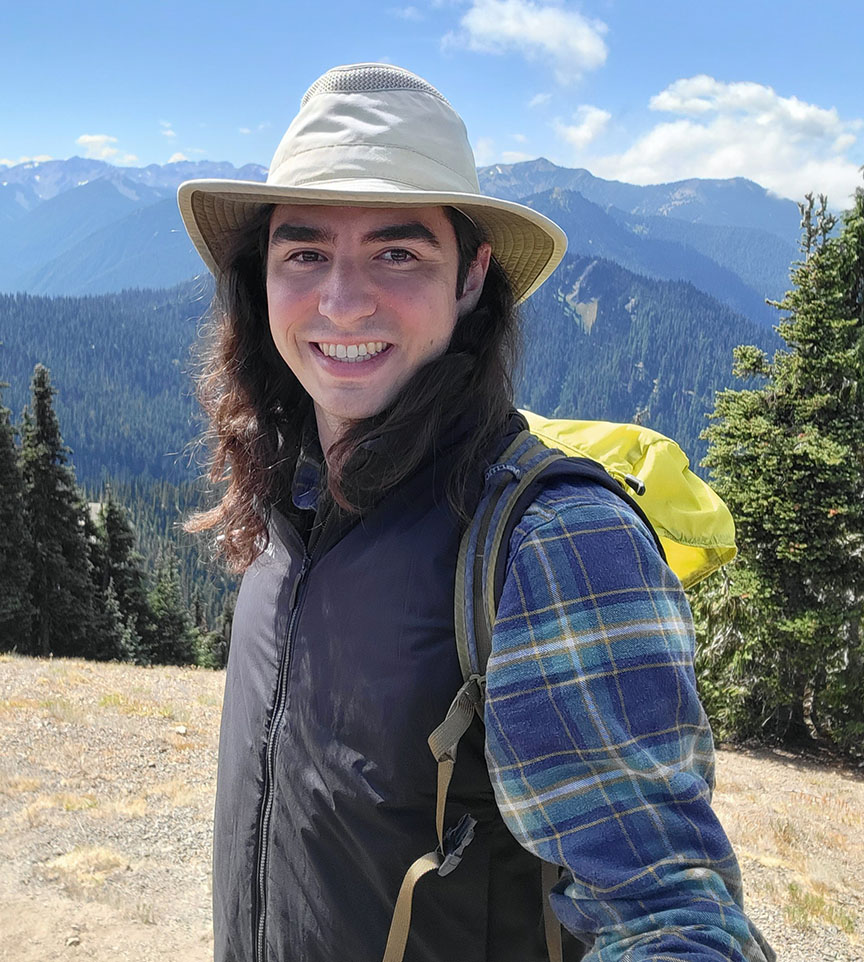“Partitioning the impacts of spatial-temporal variation in demography and dispersal on metapopulation growth rates”
Sebastian J. Schreiber: Read the article
Why does one metapopulation decline while another grows? Differences in habitat quality? In movement patterns? To answer these questions, Schreiber quantifies the relative contributions of spatial & temporal variation in demography & dispersal to metapopulation growth rates
No habitat is an island, and that includes islands. Habitat patches exist in networks connected by the species that move between them. For example, a population of seabirds on one island exchanges individuals with any island close enough for the birds to reach. If one island in the network was hit by awful storms and lost all its seabirds, it could be repopulated by its neighboring islands. Due to movement between islands, our seabirds can persist in habitats with consistently bad conditions, so long as a nearby island produces a surplus of seabirds. These networks of habitats ensure that misfortune for one population does not necessarily spell doom for an entire species.
However, these networks are still sensitive to changes in environment. If every island experienced a disaster simultaneously, such as torrential rains brought on by El Niño, no birds would be left to repopulate. Theoretical studies have given us good ideas on how the differences in conditions between habitats over time impact how likely a network is to survive. As demonstrated by our seabirds, the network can survive better when conditions across habitats are different. Conversely, networks with similar conditions over time are more stable than those that fluctuate between good and bad conditions because avoiding decline allows the growth in each year to compound. Essentially, a bird saved is a bird earned. Yet, the mathematical complexity of understanding how variation over time, space, and movement interact makes it challenging to develop effective conservation strategies for real seabirds and other organisms facing environmental change.
Dr. Schreiber set out to face this challenge and determine how combinations of different factors result in the population networks we see in nature. Armed with mathematical models that use the survival, reproduction, and movement of individuals to determine how populations grow. Dr. Schreiber created theoretical networks where he could tweak any factor to see how it impacted the survival of the network. Dr. Schreiber re-confirmed the previously known predictions on what conditions stabilize population networks but also found some surprising exceptions.
If most individuals in a network moved every year, differences in conditions between habitats made the network less likely to survive. This result was due to most individuals now experiencing constantly fluctuating conditions, just like with fluctuating conditions in one habitat over time. However, there were conditions where everyone moving at once stabilized the network. If habitats were perfectly out-of-synch so that good conditions in one lined up with harsh conditions in the other, constantly swapping homes resulted in most individuals spending more time in good conditions. This exception matches real-world examples of migratory species that move between habitats as the seasons make one more desirable than the other. Intriguingly, if one of these perfectly out-of-synch habitats is still, on average, better than the other, networks were equally stable if no individuals moved at all, like real bird species where some individuals migrate while others stay in the breeding habitat all year.
Dr. Schreiber’s work emphasizes that we can’t consider one factor in isolation when determining how populations survive. The unique quirks of environmental change and individual movement have resulted in the wide variety of migration patterns we see in nature. Considering the forces that maintain these patterns is more important than ever now that natural populations are facing unprecedented conditions. Habitat destruction and human infrastructure like roads present new barriers to movement between habitats, which could break up population networks. Managing our impacts could keep habitats connected and prevent islands from becoming alone and vulnerable.
Jeremy Summers is a PhD student at the University of Rochester studying the demographic and genetic consequences of dispersal in birds. They are also interested in long-term human impacts on species and landscapes and in innovative ways of teaching ecology and evolution. When not talking science, Jeremy enjoys hiking, cooking, and playing board games.
